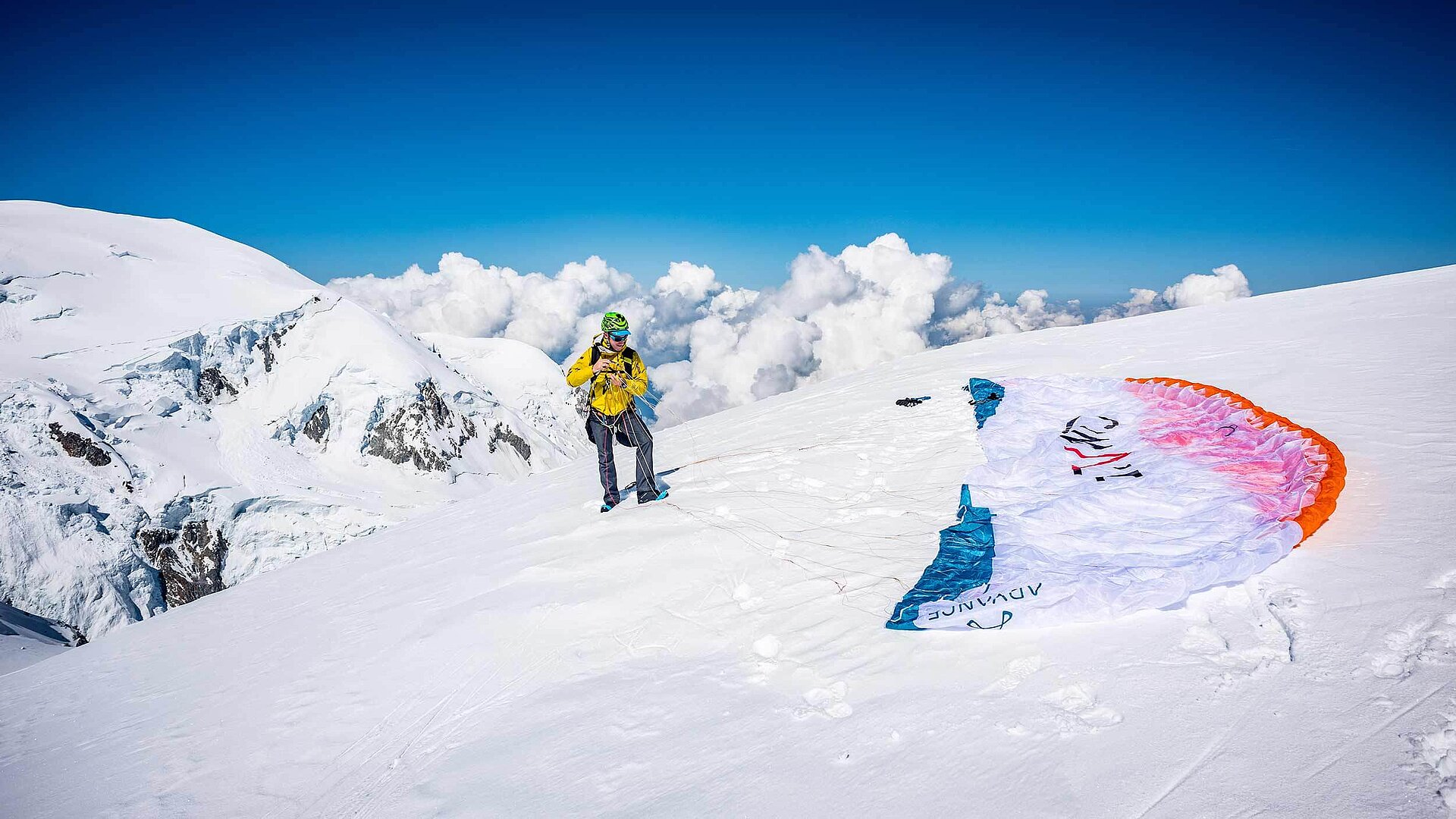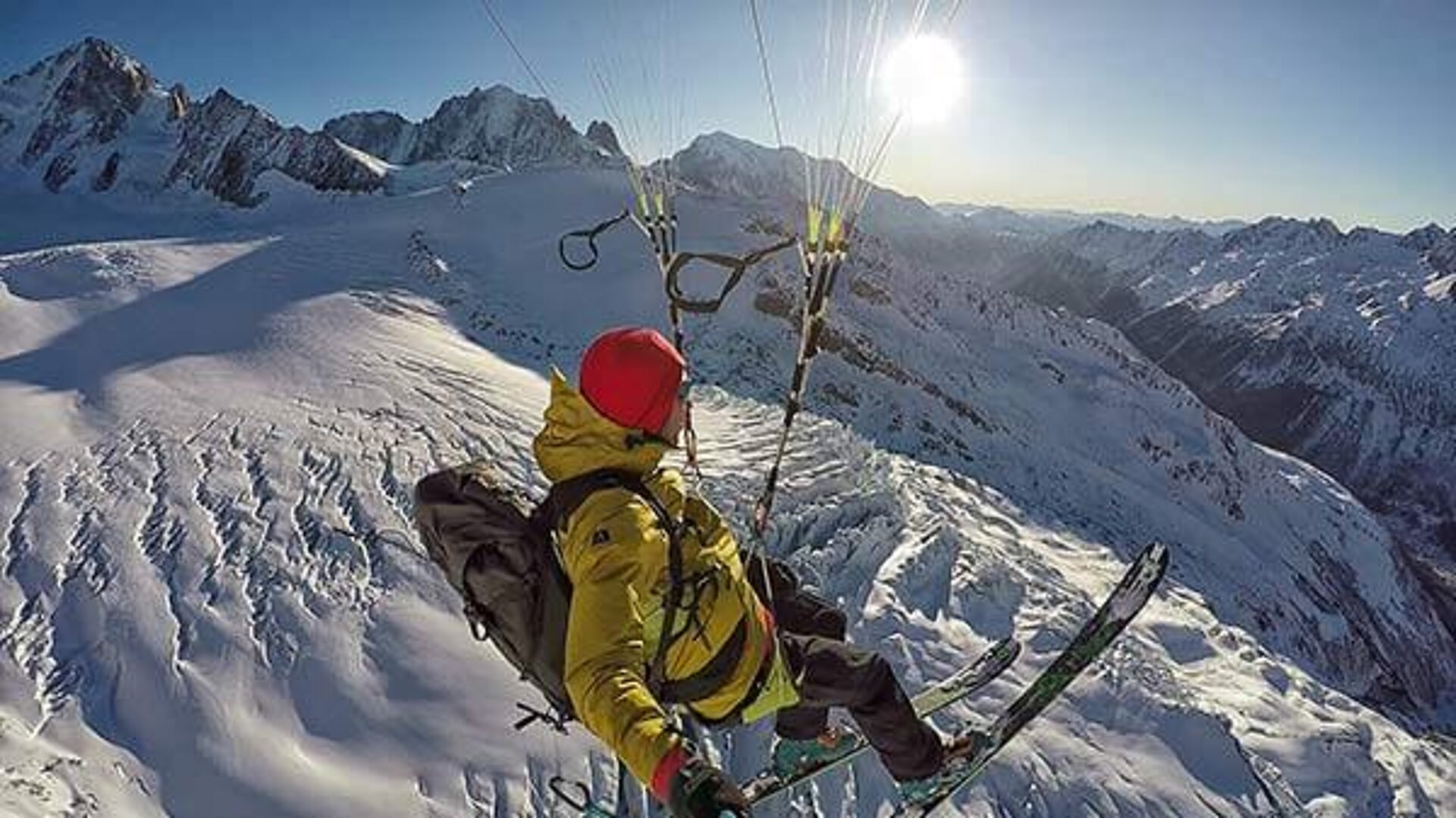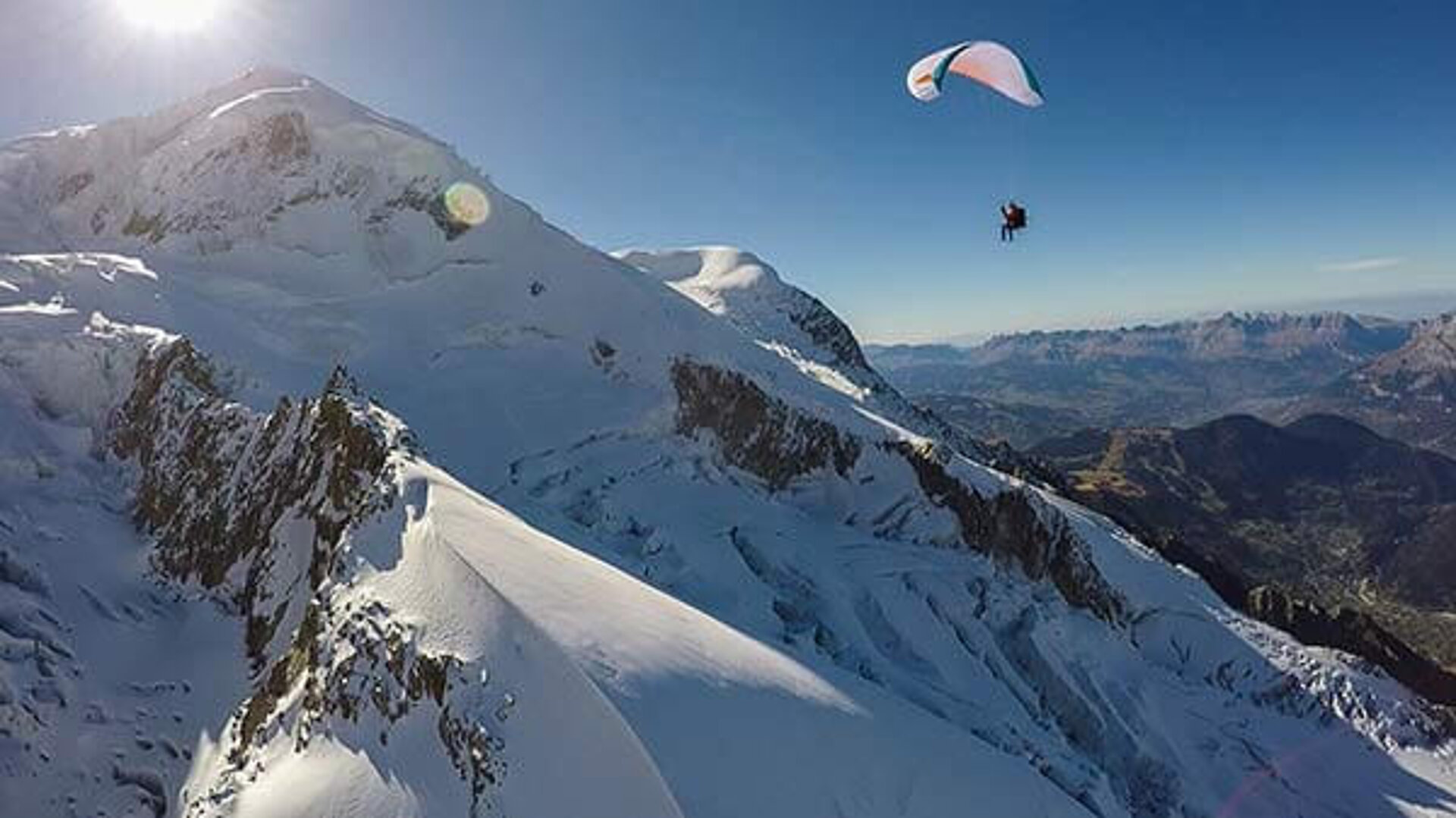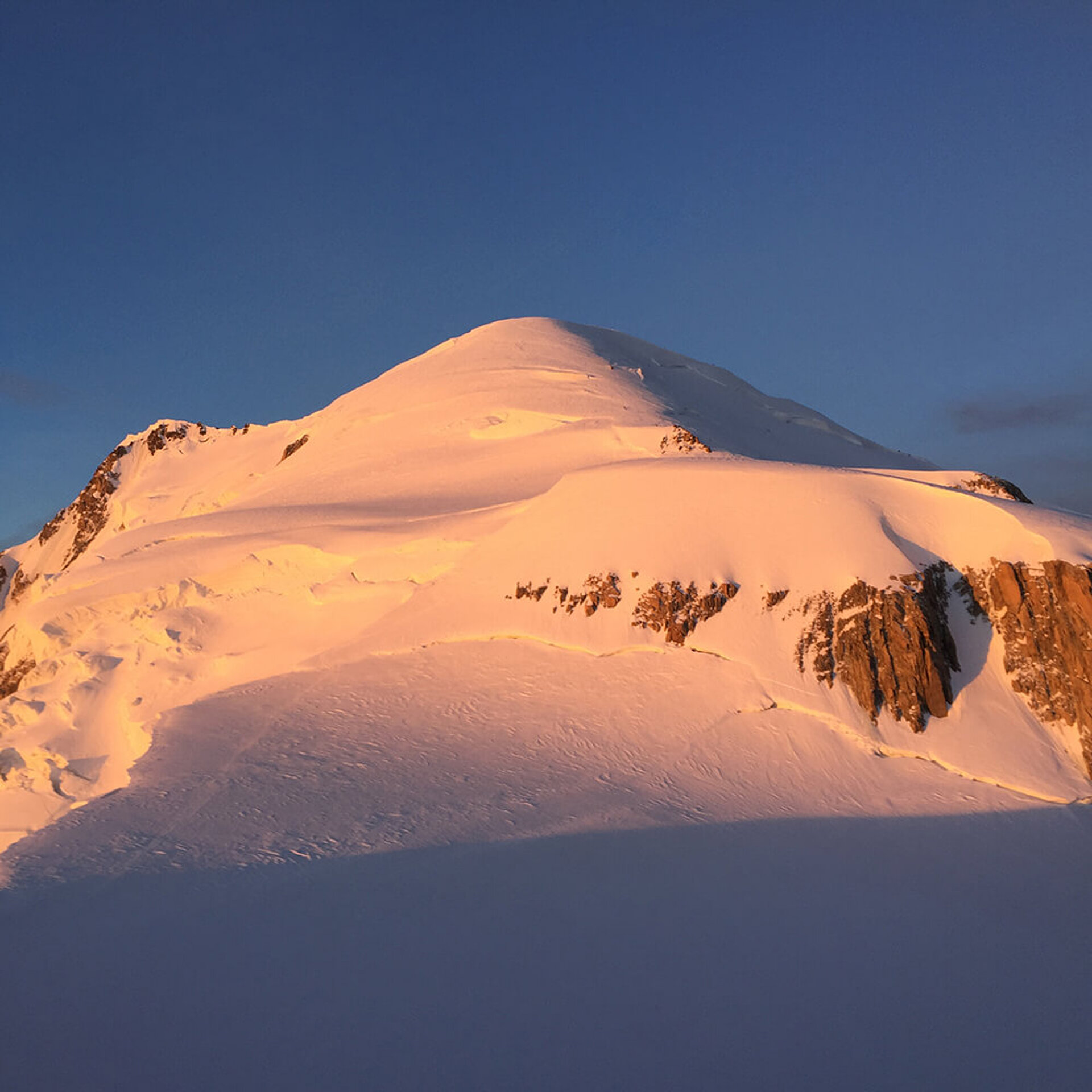Many paraglider pilots have this dream: to fly from Mont Blanc, the very top of the Alps. Mountain rescue professional and paraglider pilot Fred Souchon has already taken off eight times from this 4,810 m highest peak of the Alpine range. It’s not such a surprise - Mont Blanc is his local hill. The endless contour-following flight along jagged spines and imposing glaciers is a special experience.
It is a picture postcard scene. The sun hangs in the east like a gleaming silver disc, its rim radiating silver needles into a vivid blue sky. Fred Souchon has enjoyed this sight many times because, as a mountain rescuer on Mont Blanc, he’s out and about on the highest mountain in the Alps on a daily basis. And yet this moment is always a special experience even for him. It’s that instant in which the decision is made whether the flight from Mont Blanc is going to work – or not. “Right up to the last moment, you can’t tell whether this takeoff will be successful”, explains Souchon. “This feeling, when the feet actually leave the summit of the Alps, is therefore incredible!” he describes, and continues that he then always feels impelled to summon up a shout of delight.
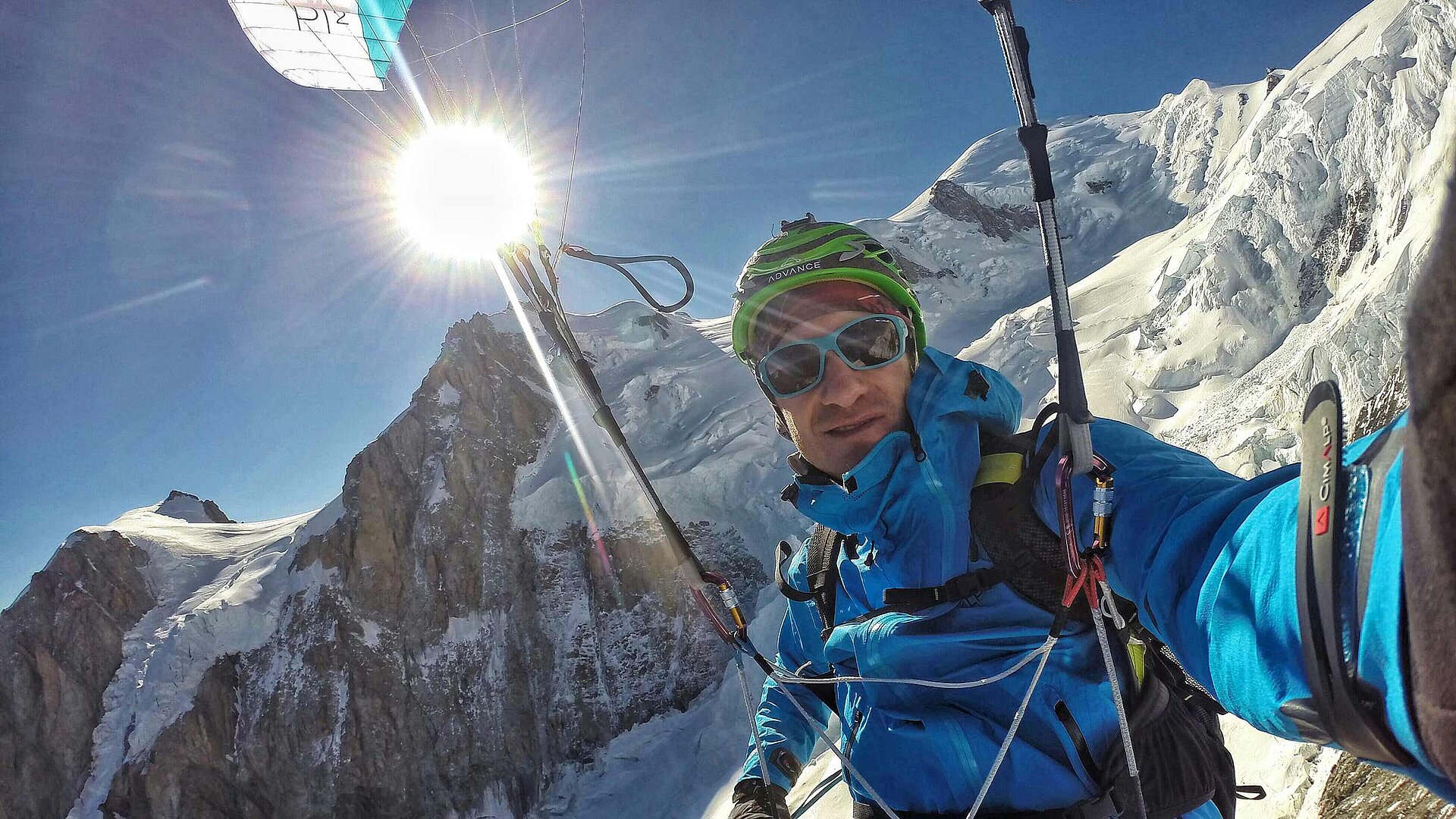
One view follows the next
There’s not much time to waste enjoying the view from the takeoff, other breathtaking sights await. Immediately after take off you fly over rocky ridges and glaciers with gaping crevasses. In addition you can observe, from above, numerous mountaineers on the rocks. “When I see this, I am reminded every time how tiny and fragile we are, in this ocean of snow and rock. That makes this flight magical”, explains Souchon, beaming.
4000 metre climb – at night
This magical experience is a long one. Souchon’s flight already begins the day before with the climb to the summit. It is no surprise that the experienced rescuer does this without the help of the cable car. “I climb from Chamonix to the summit during the night. That is almost 4000 metres, but I think it’s a really special way to get to the summit. Walking in the night, seeing the sunrise on the summit and then lifting off – there’s nothing more beautiful.” The Montblanc peak has the advantage that you can take off in a variety of directions. There’s the north takeoff on the French side, and also the south direction, towards Italy. After takeoff you can fly around to whichever side without problem. “Basically, you can also take off towards the west, but it is not so easy”, informs Souchon. “And if there’s too much wind on the top, then there’s the possibility of starting from the dome on the Gouter (4,304 m) or from the Tacul (4,238 m).”

Altitude and snow make taking off more difficult
As simple as flying from Montblanc seems when Souchon tells it, he does point out that one should not take on this climb flippantly or casually. It is important to be fit, and also have the right equipment. This still apples even if you elect to make the ‘climb’ in the cablecar. Souchon therefore advises the help of a mountain guide. “The takeoff here is never to be underestimated. The snow and especially the altitude make taking off much more difficult than the same thing at 1000 or 2000 metres”, warns Souchon.
Info Mont Blanc
To climb and fly from Mont Blanc requires some serious preparation because of the high alpine terrain. At best you should take a mountain guide who is also a pilot. The ascent route leads either from the Aiguille du Midi mountain station and the three Mont Blanc summits, or from the Nid d' Aigle mountain station over the Dôme du Goûter. There are No Fly Zones on both French and Italian sides from 1st of July up to August 31st (France) and 12th October (Italy). Ideal takeoff directions on the summit are north to southwest. For west wind you can take off from the outlying Dôme du Goûter, 500 m lower. The height difference from the summit to the landing area is ca. 3,800 metres.
Wingovers in front of the end of the glacier are an intensive experience
Immediately after his takeoff Fred Souchon turns towards the valley. He flies over the Maudit, the Mont Blanc du Tacul and then glides towards the Aiguille du Midi and the “Mer de Glace” (Sea of Ice). The special fun of this flying encourages him to follow the contours as close a possible, alongside rugged rocky ridges and over gently-sloping glacier. The high speed delivered by his small light glider intensifies the experience. As soon as the glacier steepens and the ice breaks into gigantic, towering seracs, Fred adjusts to the terrain with a few wingovers above the end of the glacier, so as to maintain his short distance from the landscape. During his countless flights on Mont Blanc he ventures ever closer as part of this brave game, all the while seeking that approach to perfection.
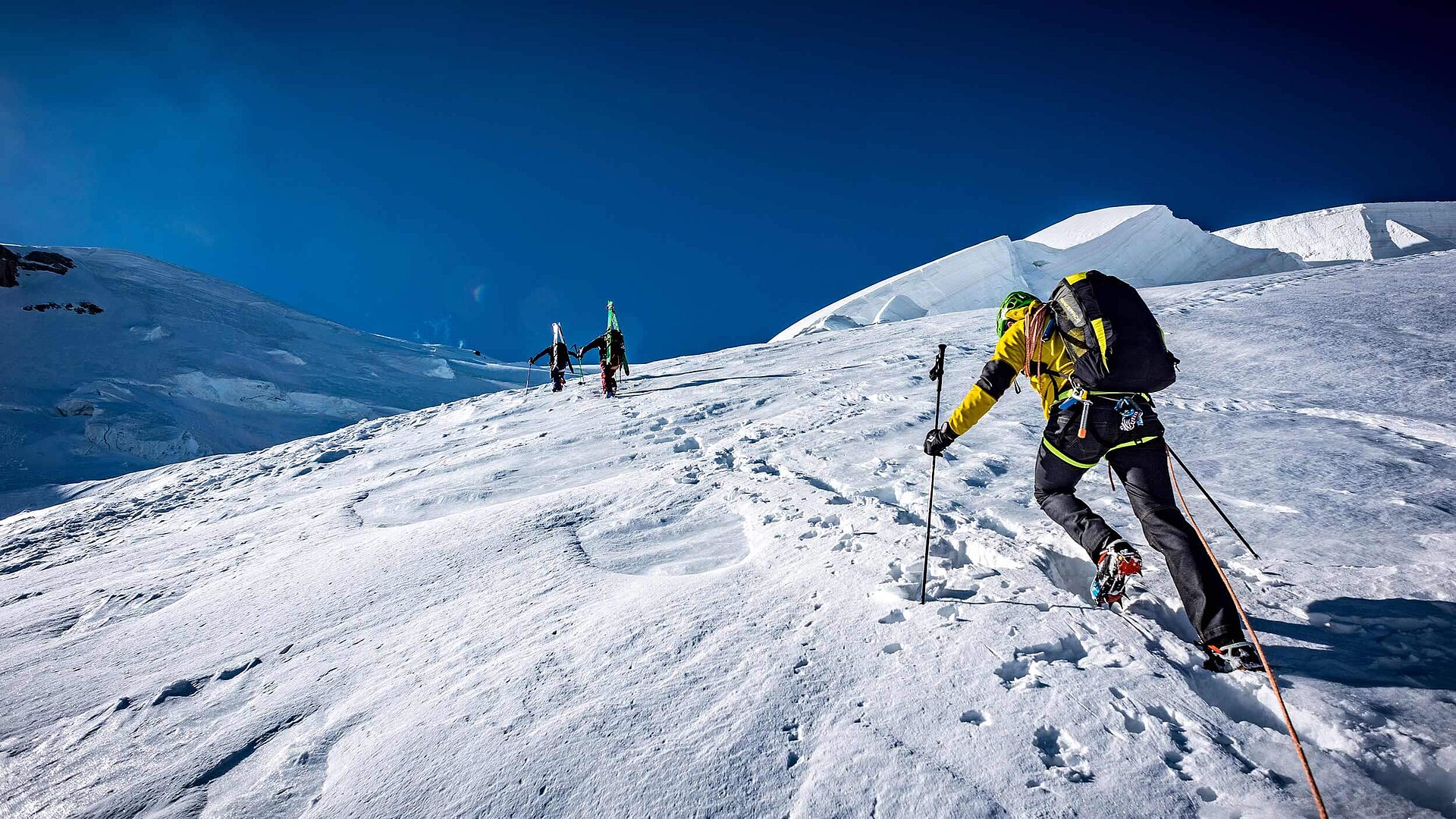
A three quarters of an hour glide to the valley
After about 40 minutes of flight the feet touch the valley floor at the Bois du Bouchet landing area. As the wing sinks to the ground behind Fred Souchon, his gaze returns towards the summit. It soars majestically above, and so high into the sky, vividly white against its blue backdrop. And although Fred Souchon enjoys this view almost daily, he still needs some time to work through the thoughts and emotions of the last three quarters of an hour.
Fred's Equipment
About Fred

Fred Souchon
Fred is an enthusiastic paraglider pilot, Alpinist and qualified mountain guide. Professionally he is a mountain rescuer in Chamonix.
Discover more